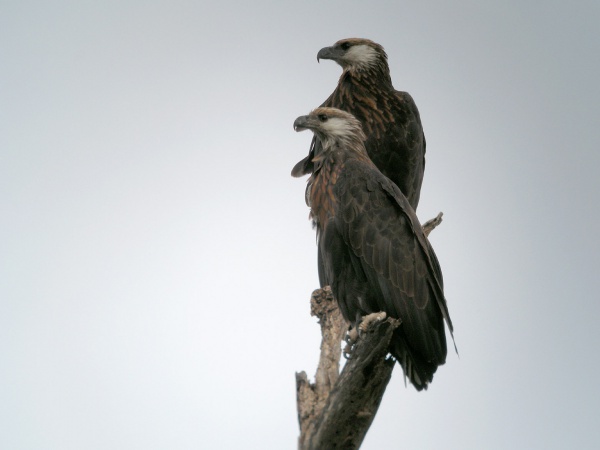Facts About Madagascan fish eagle
The Madagascan fish eagle, also known as the Madagascar sea-eagle, is a striking bird of prey found exclusively in the coastal regions of northwest Madagascar. This large eagle, approximately 63 cm in length, is notable for its pale brown head, dark brown body, and distinctive white tail. Unfortunately, the species faces severe threats from habitat loss and human persecution, leading to its classification as "critically endangered" by the International Union for Conservation of Nature (IUCN).
This medium-sized sea eagle measures between 60 to 66 cm in length and features a wingspan ranging from 165 to 180 cm. Its body and wings are dark brown, complemented by a pale brown head and a striking white tail. The bird also displays a blackish bill with a lighter base and pale grey legs. Males typically weigh between 2.2 to 2.6 kg, while females are slightly heavier, ranging from 2.8 to 3.5 kg.
The Madagascan fish eagle is closely related to the African fish eagle, and together they form a unique lineage of sea-eagles. This species is endemic to Madagascar, particularly inhabiting the dry deciduous forests along the northwest coast, north of Morondava. With only about 40 breeding pairs left in the world, it stands among the rarest birds on the planet.
Numerous threats endanger the Madagascan fish eagle. Deforestation, soil erosion, and the conversion of wetlands into rice paddies significantly impact its habitat. Additionally, competition with humans for fish stocks poses a major challenge. As a result of these pressures, conservation groups have classified this magnificent bird as "critically endangered" underscoring the urgent need for protective measures.
